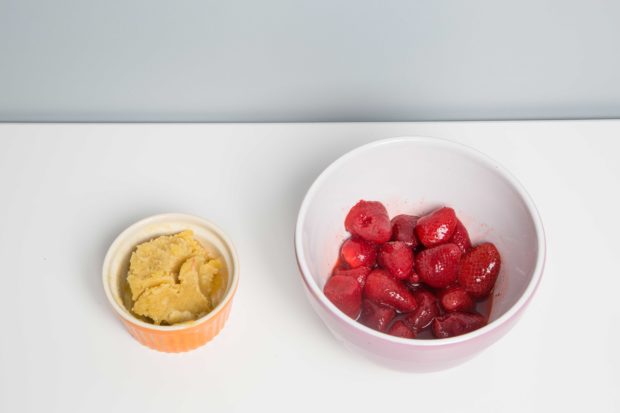

Extracting DNA from spit or fruit is a favorite science fair/Maker Faire demo. This is the adult version of that, inspired by Mac Cowell’s 5 minute DNA Extraction in a Shot Glass on Instructables. Especially his final picture, where he drinks his own salt-detergent-rum spit cocktail. Hey, if you’re going to use high-proof rum, you might as well make it tasty, right?
Extracting DNA from plant or animal sources is a fairly straightforward procedure, and can even be done at home. However, to our knowledge, no one had previously created a DNA extraction protocol that also functions as a cocktail recipe. The DNAquiri is an attempt to fill this scientific void. The cocktail consists of a strawberry puree layer and an alcohol layer, where the DNA from the strawberries is extracted into the alcohol layer. Because DNA is an extremely long polymer, when it clumps together in the alcohol layer it forms long strands that are visible to the naked eye and can be picked up with a toothpick.















